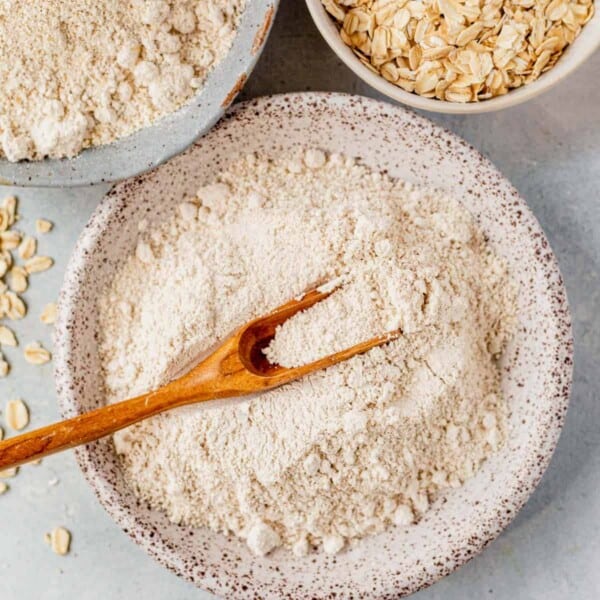This homemade oat flour recipe requires one ingredient and takes less than 5 minutes to make. Use it in your favorite baked goods, pancakes, and more for a rich and nutty finished recipe, that happens to be high in fiber.
Have even more oat to use up? Learn how to make oat milk (regular and chocolate oat milk).
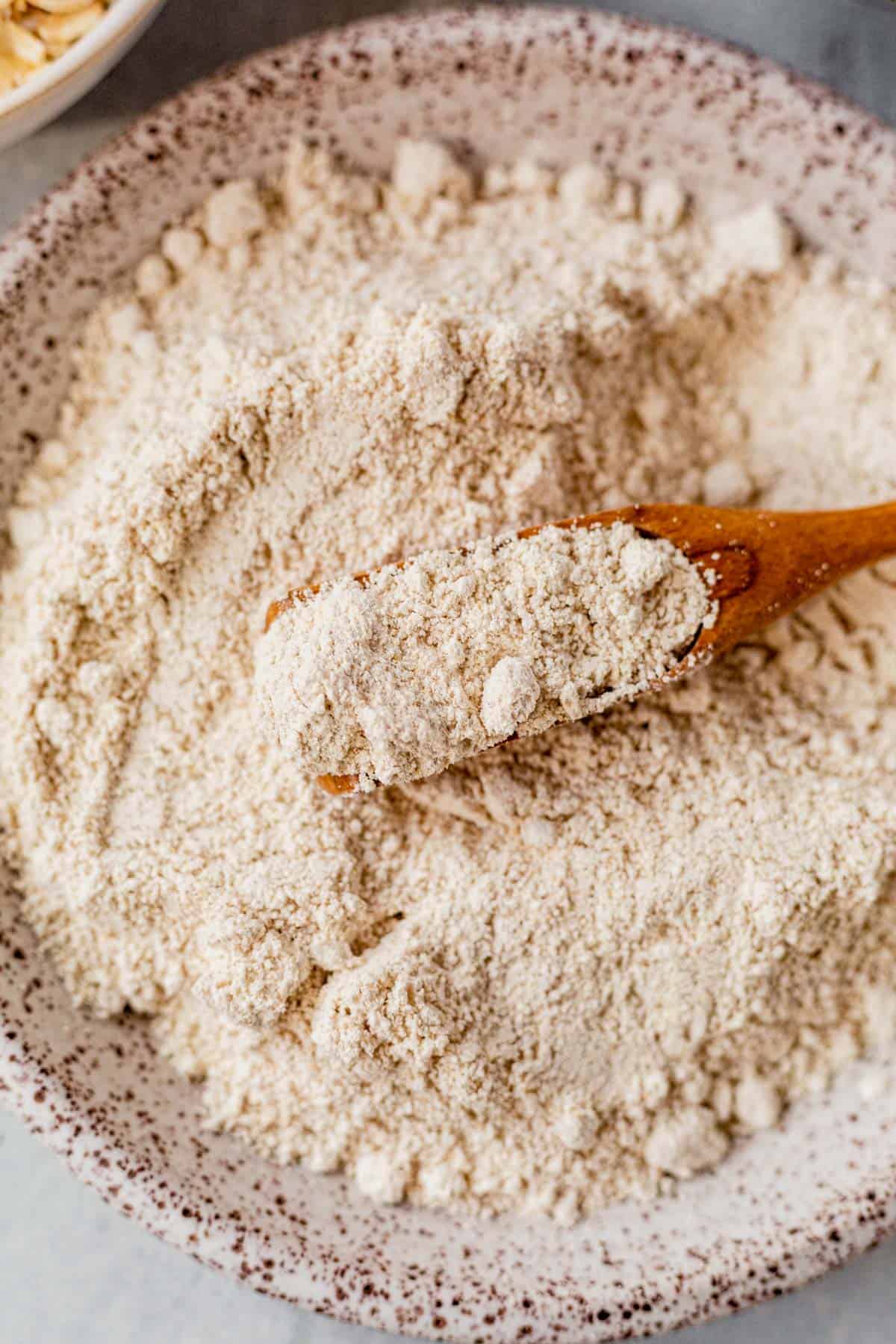
Have you ever come across a recipe that calls for oat flour and all you have on hand is a bag of rolled oats or quick-cooking oats? You don’t need to head to the store just yet, because I’m going to share all the tips on how to make it in under 5 minutes.
Today I’m walking you through the entire process including crucial success tips, the best oats to use, and a multitude of oat flour recipe ideas.
I began making my own a few years ago after oat milk lattes became all the rage. I even started to make homemade oat milk too. Consider this your Ultimate Guide to Oat Flour!
After you make it, try these oat flour cookies, oat flour banana bread, or fluffy oat flour pancakes.
Table of Contents
Why You’ll Love Making Homemade Oat Flour
- Save money by using what you already have in the pantry.
- Easy to store and use for several recipes.
- Its nutty, rich flavor adds a special something to your recipes.
- Kids love it!
- It’s rich in fiber, whole grains, protein, and vitamins.
Gather These Ingredients and Tools
Here is what you need to make your own homemade oat flour. Oats are a pantry staple and/or easy to find in your local grocery store. Jump down to the recipe card for exact measurements. This section may contain affiliate links.
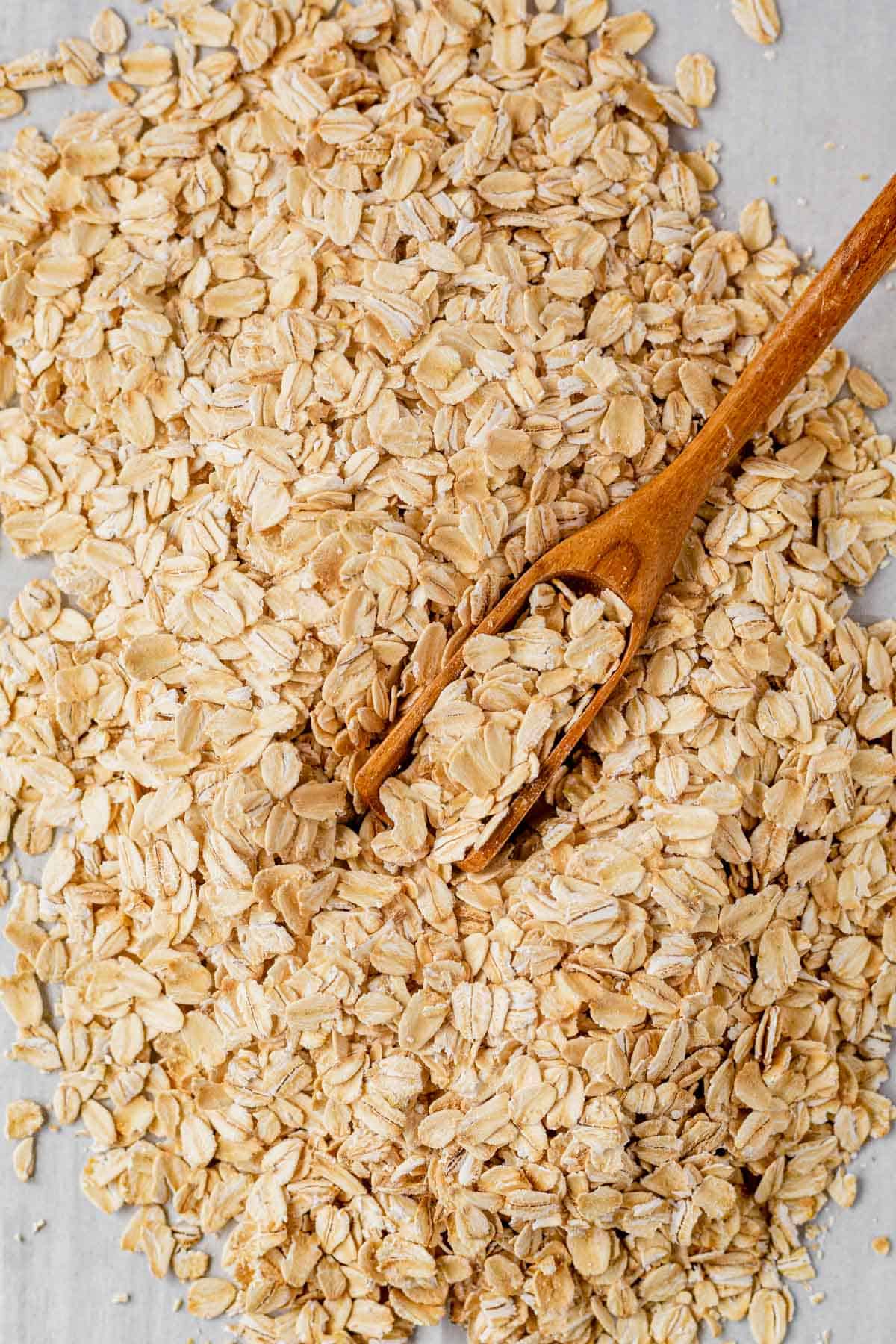
Oats: This recipe calls for old-fashioned rolled oats, but quick-cooking oats and even steel cut oats work well. Make sure they’re certified gluten-free oats, like Bob’s Red Mill Rolled Oats. The type of oats you choose will depend on your dietary needs and what you have on hand or have access to.
Measuring cups: 1 1/4 cups of oats yield 1 cup of oat flour, so grab a measuring cup or two.
Food Processor or High-Speed Blender: for best results, use a high-powered blender or processor, like a Vitamix, to get a super fine powder consistency that resembles white or whole wheat flour.
How to Make Oat Flour
The full printable recipe is below, but let’s walk through the steps with some photos so you have a clear idea of what to expect. This recipe is really easy and these step-by-step instructions will make sure it turns out every time.
Measure out the rolled oats. You’ll need more rolled oats than a recipe calls for because they tend to take up more space when they are ground into flour.
Add the measured oats to the blender or food processor.
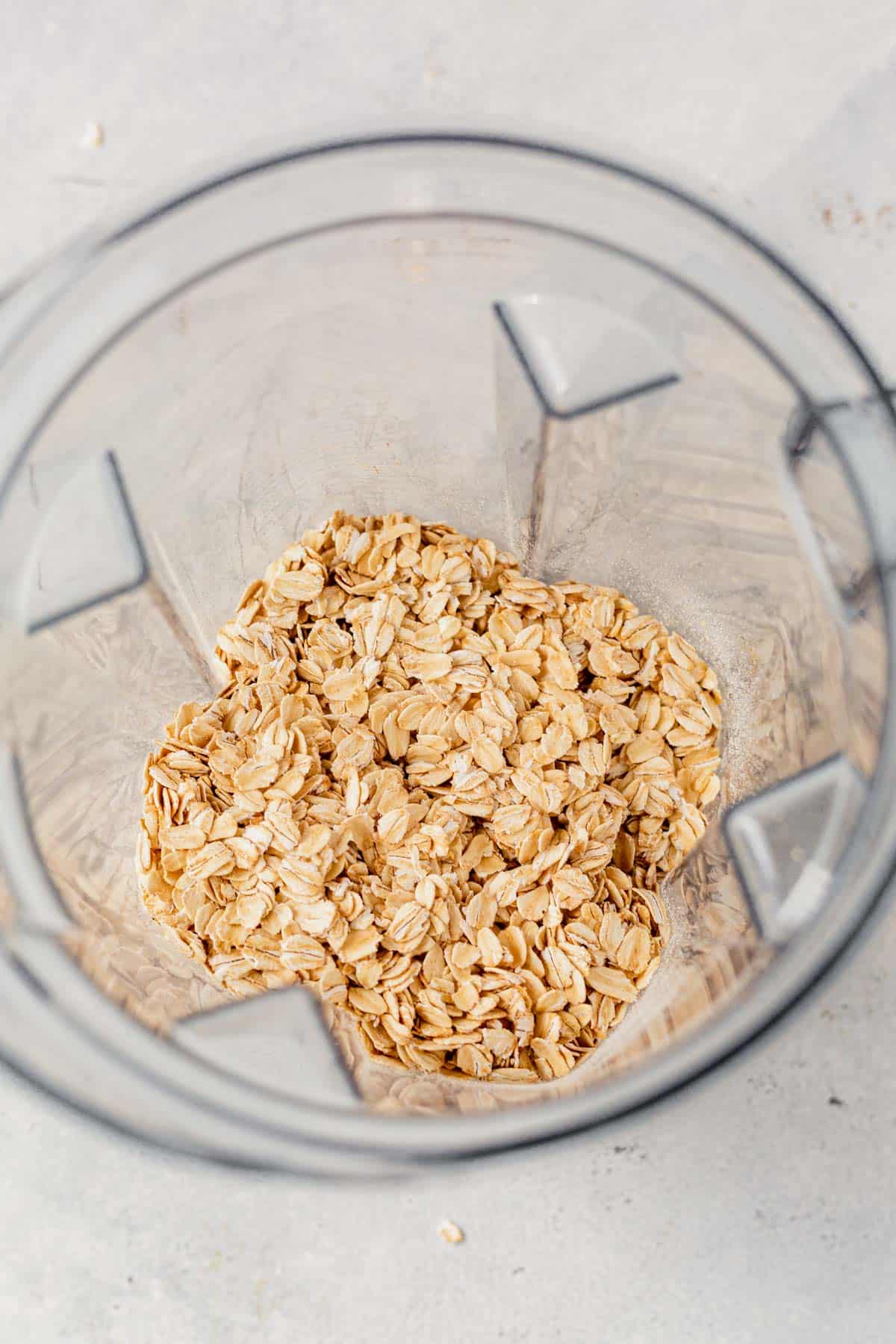
Pulse the oats until they are ground into a fine powder, which will take approximately 1-2 minutes. You can also let the blender run continuously for a smoother texture. It may take longer if your blender isn’t as strong.
Stop to scrape any oats from the sides of the bowl that may have been stuck. Check the consistency and if you see any small flecks of oats, continue to blend for another minute or two. See the image on the left below as an example.
Success tip: Once the oats are ground, sift it through a fine mesh strainer to remove any larger pieces of oats that did not get fully ground.
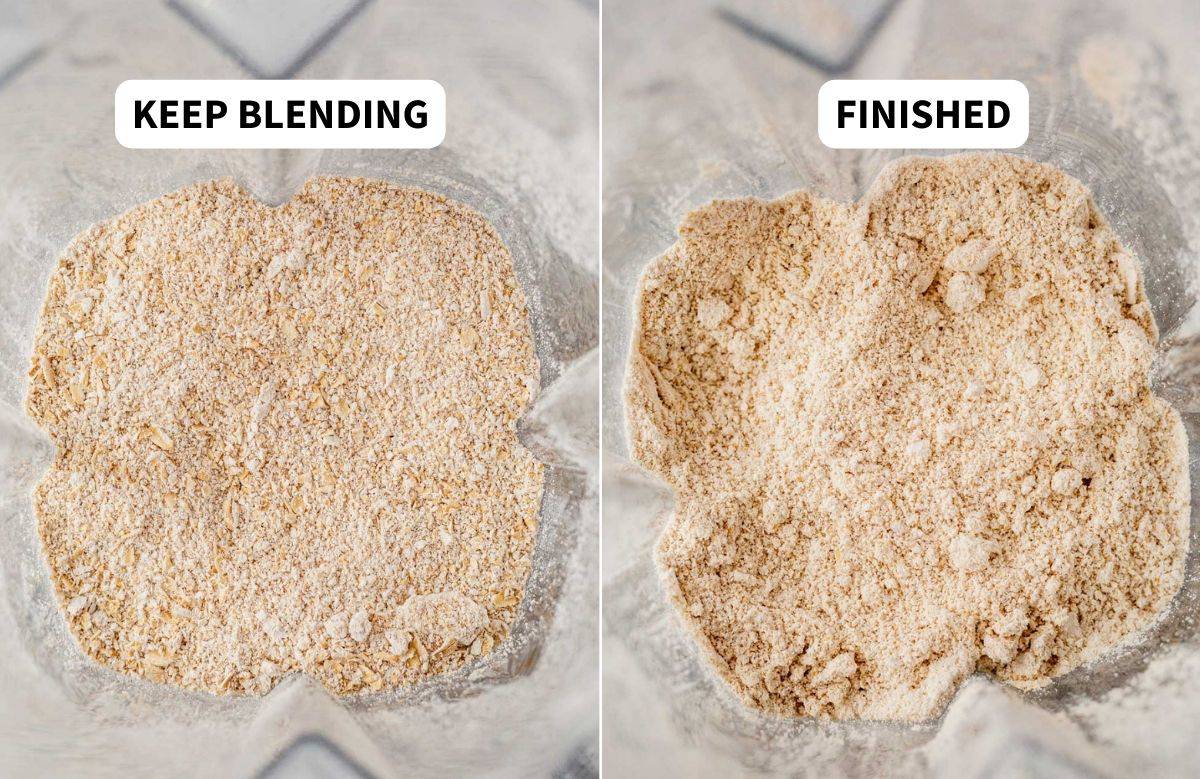
Substituting Oat Flour for All-Purpose Flour
You can substitute oat flour for regular flour in a few recipes, but it won’t work in all cases because it has a different texture and protein content, affecting the final result of the recipe. Here are some things to keep in mind when substituting.
- Texture: Oat flour has a denser and coarser texture than all-purpose flour, which can affect the texture of baked goods. This may result in a denser and chewier final product.
- Protein Content: All-purpose flour contains gluten, which gives baked goods their structure and helps them rise. Oat flour does not contain gluten, which means it may not work well in recipes that require a lot of structure. Adding a binding agent, such as xanthan gum or chia seeds can help hold the baked goods together.
- Ratios: you may need to adjust the ratios of other ingredients to compensate for the differences in texture and protein content.
My favorite way to substitute oat flour for regular flour: use 3/4 cup of oat flour and 1/4 cup tapioca flour for every 1 cup of flour.
Note: for recipes that require a lot of structure or a finer texture, such as cakes or bread, it’s best to use flour that contains gluten, such as all-purpose flour or bread flour.
Try 1:1 gluten-free flours, like Bob’s Red Mill or King Arthurs, if you need a super accurate gluten-free substitute for all-purpose flour.
How to Use Oat Flour in Recipes
It’s a versatile ingredient used in a variety of recipes, from cookies, quick bread, and muffins, and is great for gluten-free baking. Here are some tips for using it in your recipes.
- Baked Goods: It’s delicious in baked goods, such as muffins, pancakes, and cookies. Because it doesn’t contain gluten, which helps to bind the ingredients together, you may need to add a binding agent like xanthan gum or tapioca flour.
- Thickener: You can use it to thicken soups, stews, and sauces. It can be added directly to the liquid and whisked until smooth. It gives a slightly nutty flavor to the dish, which can be a nice addition to savory recipes.
- Coating: Swap oat flour for other flours when coating meat, like our crispy chicken salad, to give it a crispy, crunchy texture.
- Energy Bars: Use it as a base for homemade energy bars for a healthy snack.
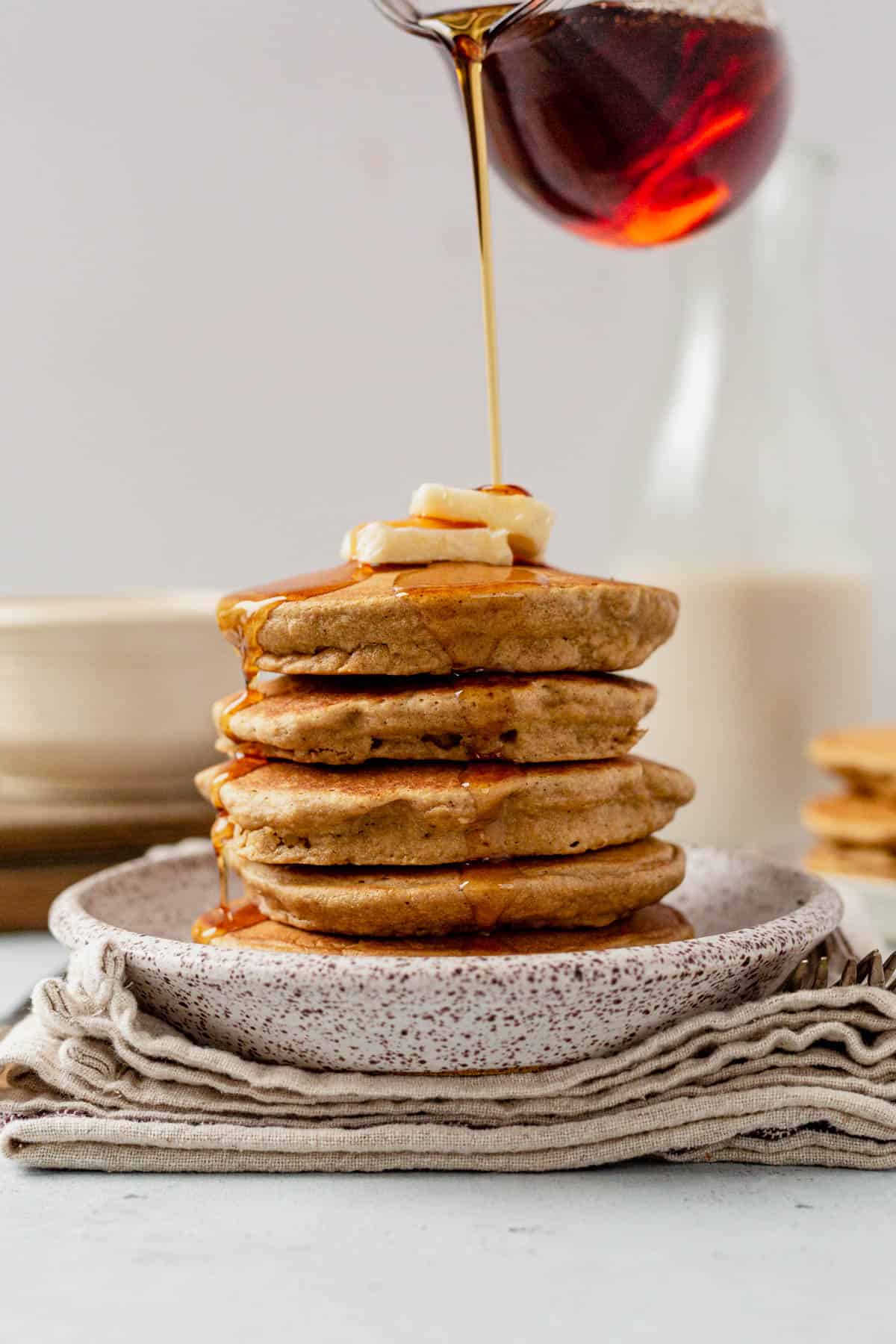
Oat Flour Success Tips
- To make a larger batch, increase the amount of rolled oats you use.
- If you don’t have a blender or food processor, you can use a coffee grinder to grind the oats.
- You can also add other ingredients, such as cinnamon, to enhance the flavor.
- If you have leftovers, use it to make a batch of white chocolate cranberry oatmeal cookies or add it to your morning smoothie for an extra boost of fiber.
Recipe FAQs
Oat flour is just oats that are blended well until they have a flour-like consistency. If you have rolled oats or quick-cooking oats and a blender, you have everything you need to make diy oat flour.
Use certified gluten-free oats if you follow a gluten-free diet. Please note that some with Celiac disease may still be sensitive to oats, even if they’re gluten-free.
Making your own is just slightly cheaper than purchasing pre-made. The cost of store-bought oat flour can vary depending on the brand and where you purchase it, but it’s typically slightly more expensive than buying whole oats and grinding them yourself. A 32-ounce bag of whole oats costs around $6 (right now) and yields close to 6 cups (about $1 per ounce). A 16-ounce bag of pre-made oat flour costs around $6 and yields just over 4 cups (about $2.50 per ounce)
It will last up to 3 months in an airtight container in a cool, dry place. Extend the shelf life by storing it in the fridge for up to 6 months or in the freezer for up to a year.
You can use old-fashioned (rolled) oats, quick-cooking oats, or even steel-cut oats. Since steel-cut oats are dense, they require more blending time and yield twice as much flour per cup.
You’ll need 1 1/4 cups of whole oats to make 1 cup of flour.
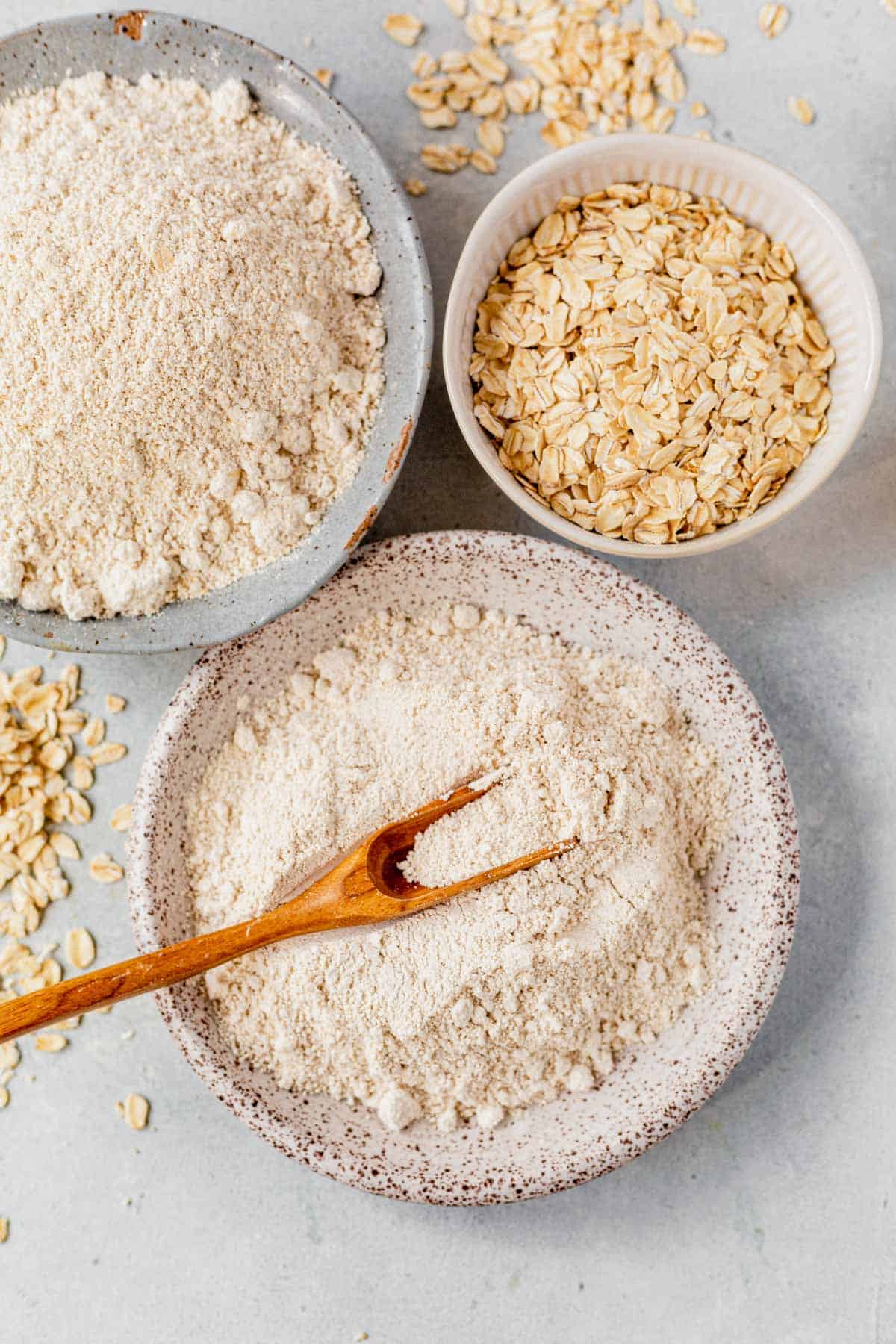
Storing Tips
It’s important to keep oat flour it in an airtight container to prevent moisture from getting in. Here are some tips for storing oat flour.
- Airtight Container: Store oat flour in an airtight container to keep out moisture and air, which can cause the flour to go rancid or spoil. Glass jars with tight-fitting lids or plastic containers with snap-on lids work well.
- Cool, Dry Place: Store oat flour in a cool, dry place, away from direct sunlight, heat, or humidity. A pantry or cupboard is a good choice, as long as it’s not near a stove or other heat source.
- Label the Container: Label the container with the date of purchase or the date the flour was made, so you know how long it has been stored.
- Freeze for Long-Term Storage: Oat flour can be stored in the freezer for longer-term storage. Transfer the flour to a resealable freezer bag or airtight container and store in the freezer for up to six months. Let the flour come to room temperature before use.
- Check for Freshness: Check the oat flour for freshness before using it in a recipe. If it smells musty or rancid, or if there are any signs of pests, discard it and purchase or make a fresh batch.
Oat Flour Recipes
Muffins: Oat flour muffins are some of our favorite recipes to make with homemade oat flour. We use signature oat flour and tapioca flour blend in our blueberry lactation muffins.
Pancakes: Use a couple of cups of flour to make these incredibly moist banana oatmeal pancakes, healthy pumpkin pancakes, or these ultra fluffy classic oat flour pancakes for the best weekend brunch. You can even meal prep healthy banana oatmeal waffles for the week.
Energy Bites: Get a really smooth texture in carrot cake energy bites, cashew butter protein bars, or chocolate cashew energy bars. These peanut butter protein energy balls, oatmeal cookie energy bites, and blueberry muffin energy bites are a fan favorite among our kids.
Cookies: Make the ultimate oat flour cookies, oozing with melted chocolate chunks and a tender, chewy texture. You could also swap it for the rolled oats in these flourless monster cookies or flourless oatmeal chocolate chip cookies.
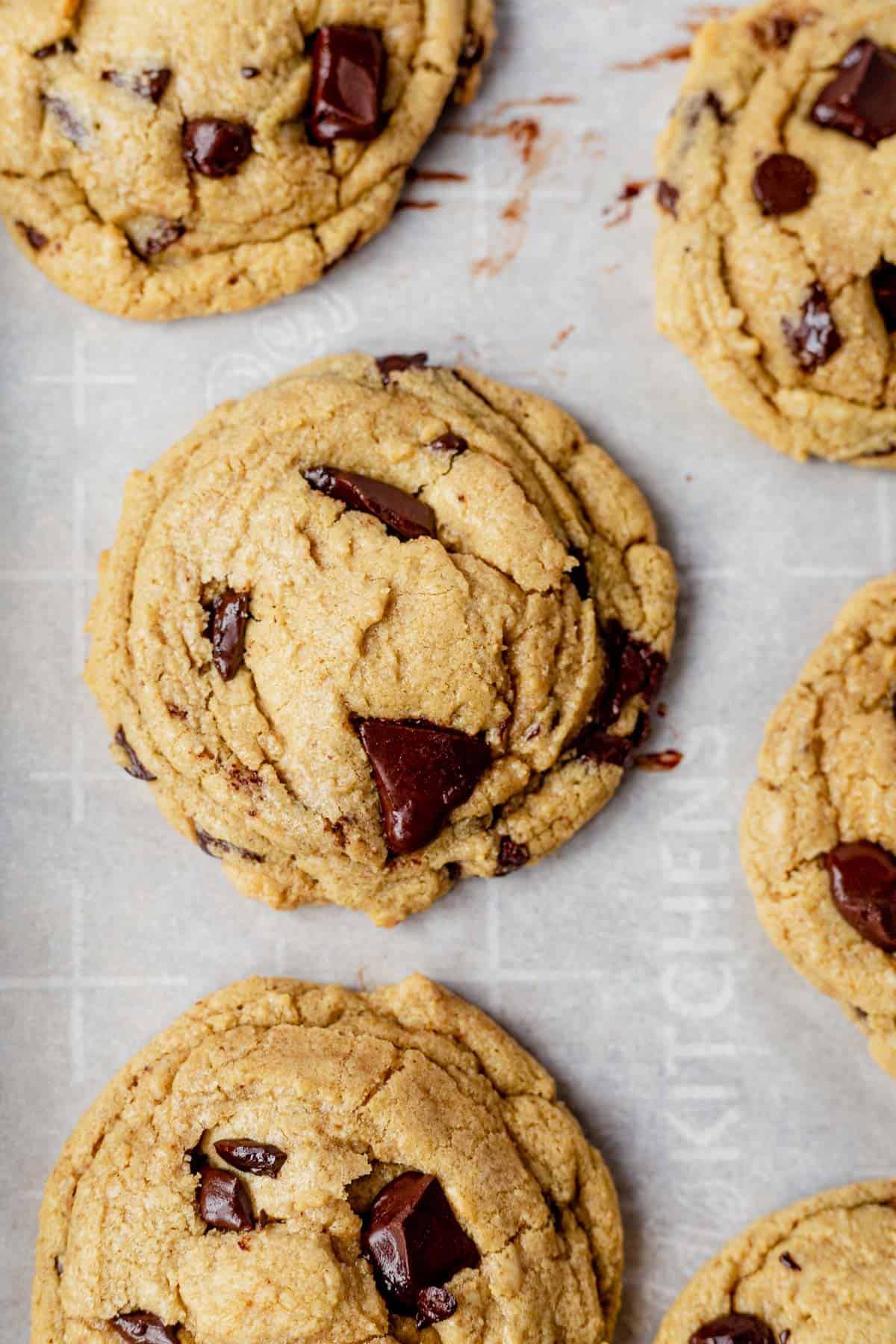
I love using oat flour in my gluten-free recipes because it’s also nut-free, making it a great alternative for anyone with a nut or coconut allergy. It’s basically the flour everyone can eat!
If you make this recipe, I’d love for you to give it a star rating ★ below. You can also tag me on Instagram so I can see it!
Oat Flour Recipe
Save this Recipe!
Ingredients
- 1 1/4 cup old-fashioned rolled oats, quick-cooking oats, or steel cut oats certified gluten-free if needed (we prefer roll oats)
Instructions
- Place the oats in the bowl of a food processor or in a high-speed blender and blend or pulse for 1-2 minutes, stopping to scrape down the sides of the bowl as needed. Check the consistency of the flour and if you still see flakes of oats, continue to blend until it reaches a powder-like consistency.
- Use right away or store oat flour in an airtight container at room temperature for up to 3 months.
Notes
Equipment
- High speed blender or food processor
Nutrition
Nutrition information is automatically calculated, so should only be used as an approximation.
This post may contain affiliate links. Read our disclosure policy.

